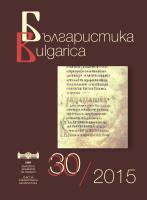
Книги 2014–2015 г.
Selected bibliography in the field of Bulgarian Studies published in 2014-2015
More...We kindly inform you that, as long as the subject affiliation of our 300.000+ articles is in progress, you might get unsufficient or no results on your third level or second level search. In this case, please broaden your search criteria.

Selected bibliography in the field of Bulgarian Studies published in 2014-2015
More...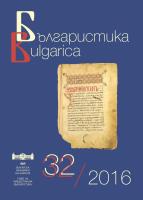
Selected bibliography in the field of Bulgarian Studies published in 2015-2016
More...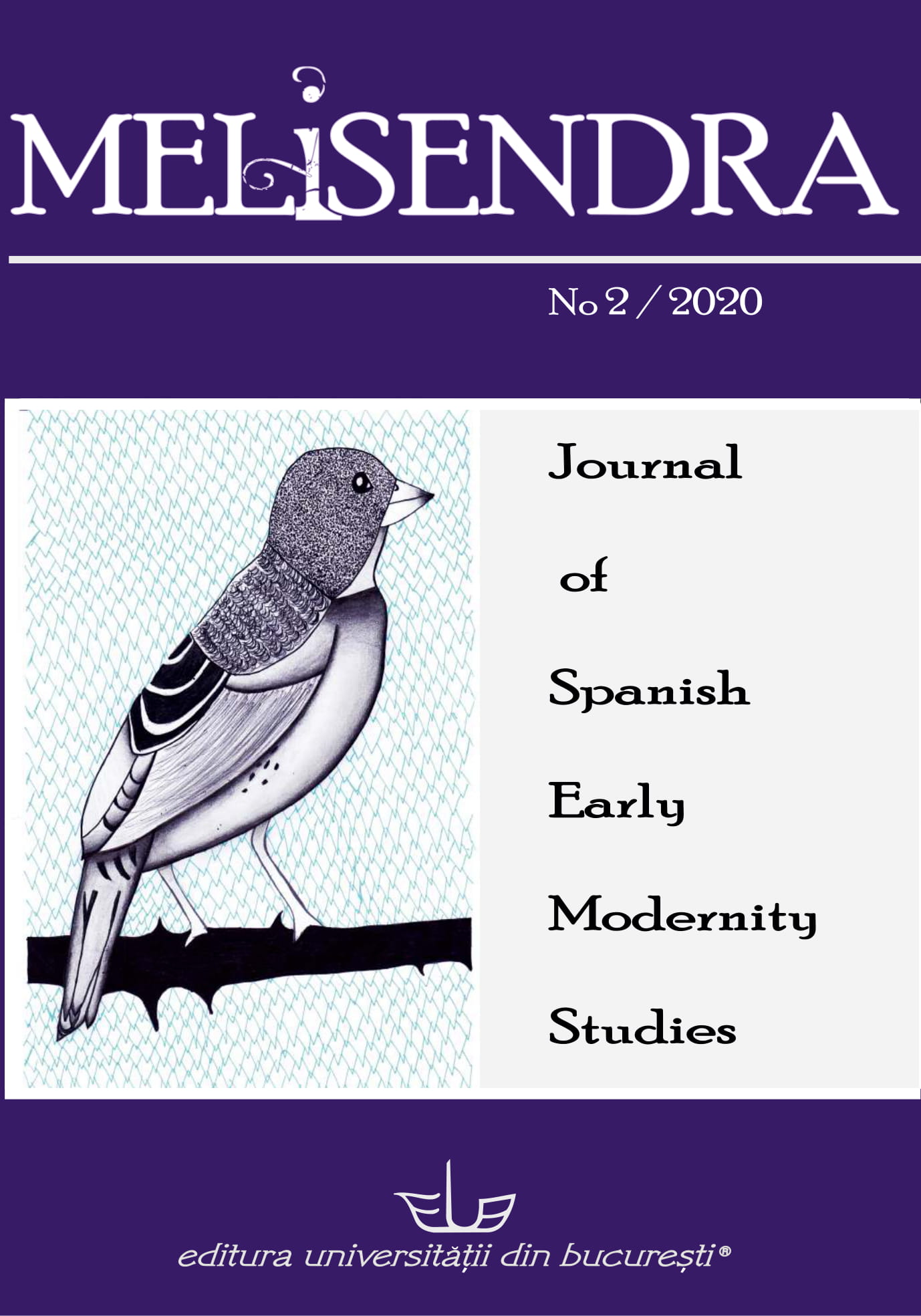
Se estudia el enfoque que se le dio a la lactancia materna en diversos textosde la temprana modernidad: obras médicas de los siglos XV al XVII del Viejo y delNuevo Mundo y crónicas de la conquista espiritual de América. El corpus textualseleccionado lo unifica su marcado providencialismo y su potestad Divina. Se proponeubicar estas obras desde una tradición que toma en cuenta el eclecticismo y eldinamismo en la materialidad de la cultura escrita: siempre se construye un texto a partirde distintas fuentes para conseguir, de modo activo, algo novedoso. Con base en esto, sedestaca que los autores médicos y cirujanos de esta clase de obras crearon unametatextualidad en dos sentidos: uno propio del quehacer del arte médico y otromeramente literario. Finalmente, se propone entender las funciones de los autoresdentro del entramado al que invita su discurso normativo de estilo áspero, desde el cualdefendieron la idea de un paraíso en el Nuevo Mundo ante el cisma que tuvo la Iglesiaen el siglo XVI.
More...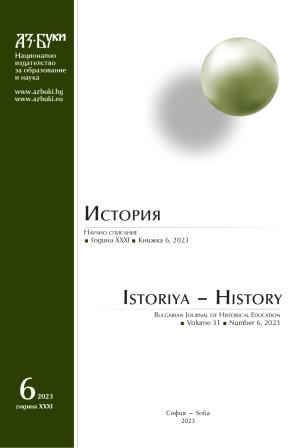
Among the emerging trends in history education in the first decades of the 21st century – strengthening of international cooperation in this field, change in value attitudes and orientations, as well as digitization in history education – the subject of this publication is the first trend. The article examines the activity of EUROCLIO and the International Association for History Didactics, their joint work with various organizations and institutions in the implementation of projects and the creation of history textbooks from the beginning of the XXI century.
More...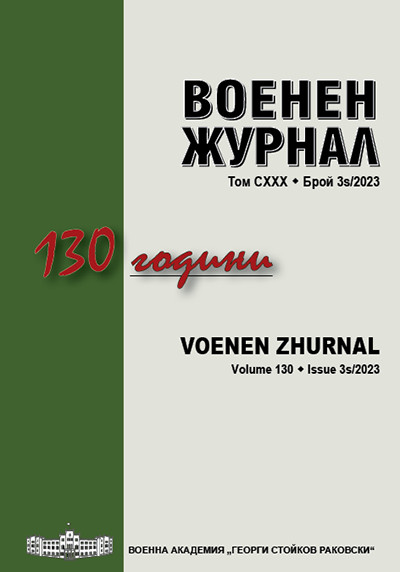
The historiography devoted to the Balkan Wars of 1912 – 1913 is considerable in volume. There is hardly any research however regarding the question how such a distant country as the USA “sees” the development of the two military conflicts in the southeastern part of Europe preceding the Firs World War. An excellent basis for putting the topic on the agenda is created by the available documents from the archives of the USA – both published and in digital version. Their inclusion in scientific circulation will not fundamentally change the general knowledge of the Balkan wars, but it will add some interesting touches to it. This is precisely the main, if modest, purpose of this brief paper.
More...
The article examines the actions of the 9th Infantry Pleven Division in the Second Balkan (Inter-Allied) War from the memoirs of Ivan Kovashki, Company sergeant major of the 34th Infantry Troyan Regiment. These memories are a valuable source for the actions of the division as well as his 34th Regiment. The memoirs provide first-person information not only about the course of hostilities, but also about some fateful moments related to the soldiers’ mutinies in the division, saving the regiment’s flag, and relationships between officers and soldiers. A comparison is made between the facts transmitted through personal memories and the official (archival) documents of the division: relations, operational orders, reports, etc. The goal is to clarify in the most accurate and historically accurate way the reasons that led to the disbandment of the division, as well as to emphasize the heroism of its ranks who remained loyal to their oath to the King and the Fatherland.
More...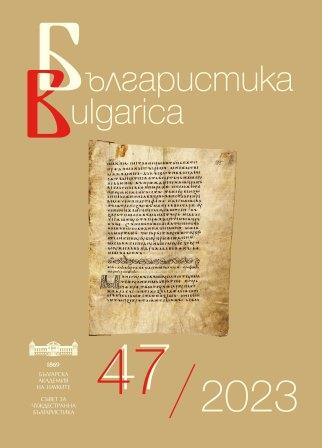
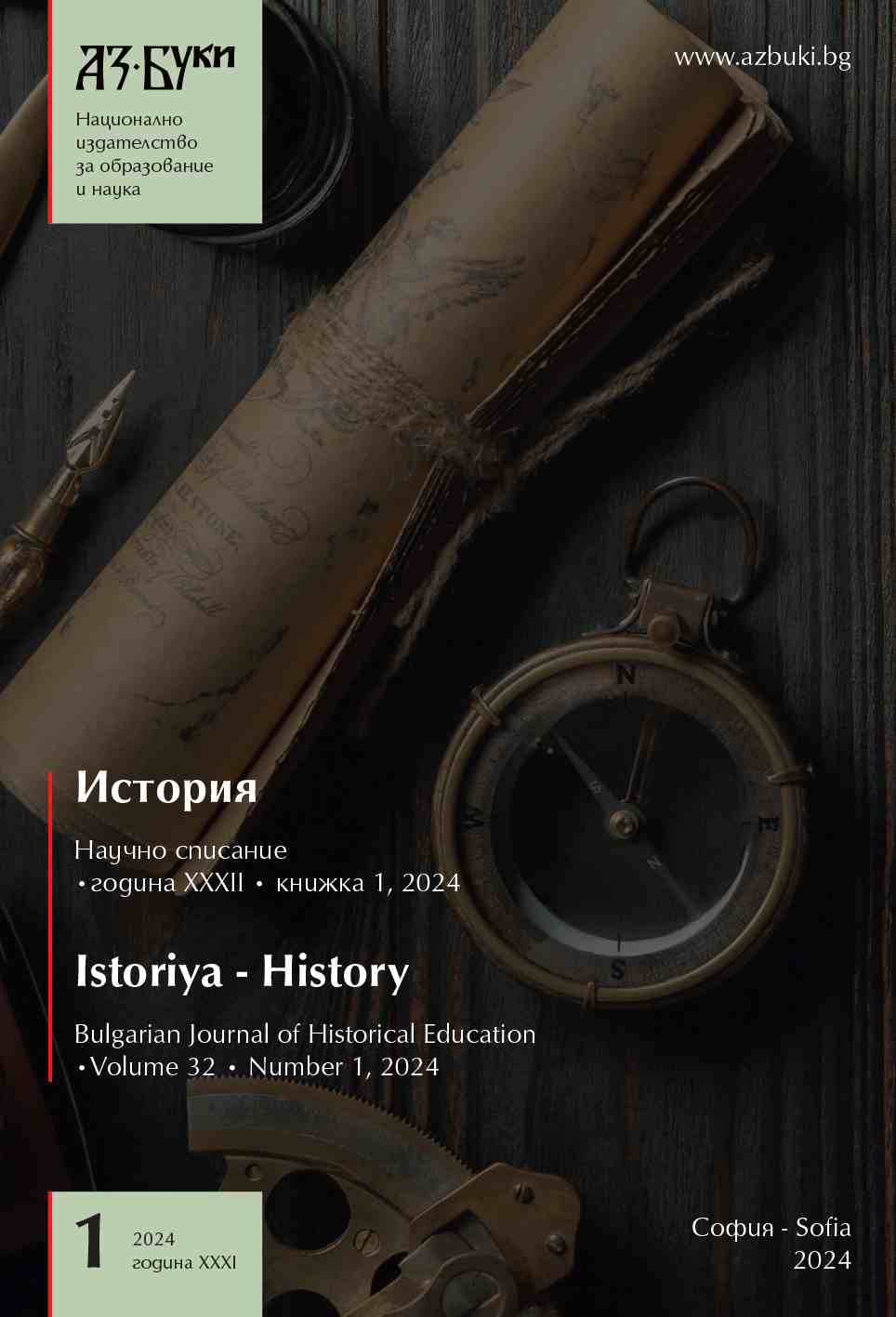
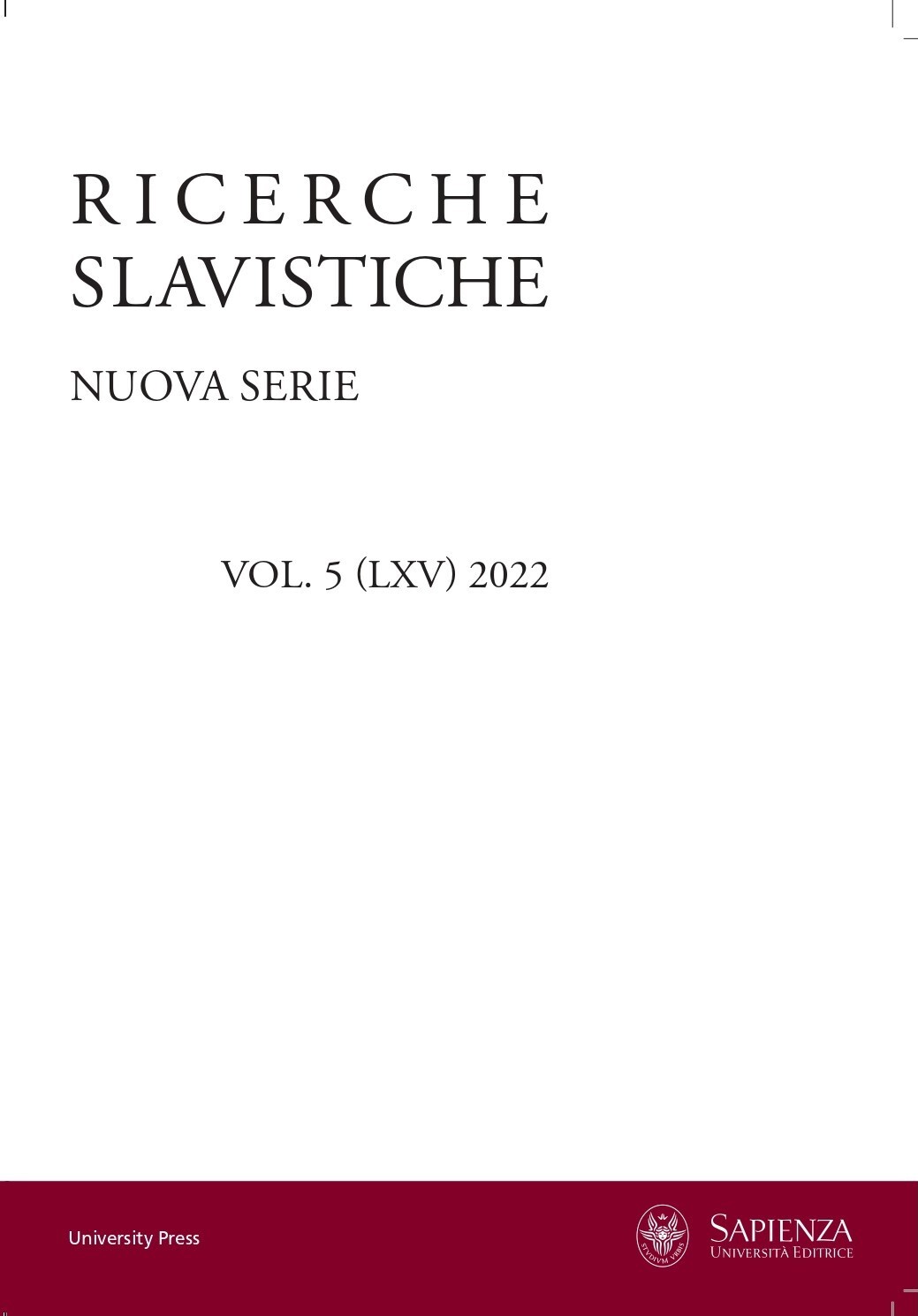
Serbocroatistic contributions have been published on the pages of “Ricerche slavistiche” since 1952, when this academic journal of Slavic Studies was founded by Giovanni Maver at the University of Rome (now Sapienza University). Articles and reviews on various Serbocroatistic topics (that is concerning linguistics, literary history, literary criticism, culture) have been appearing in this journal with such a continuity that they can be included among the most frequent ones.
More...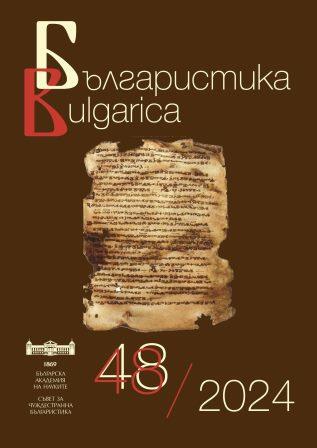
Data about scientific events in the field of the humanities in Bulgaria in the first half of 2024.
More...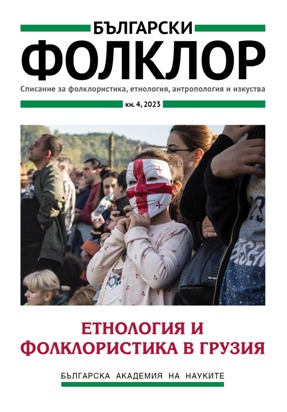
Georgian ecclesiastical hymns and folk songs are perceived within one musical language. However, the stylistic palette of Georgian song is more diverse than that of generally more regulated chants. Nevertheless, Georgian church chants made a significant contribution to the development of expression techniques of Georgian folk music tradition. Apparently, This tendency was more manifested in the following directions: • Increase in the melody volume and centonization principle (linking the phrases) in the songs; • Differences between Acharan and Gurian songs through the Prism of changing religious situation; • Structural and dramaturgical proximity of Svan hymn-like songs and mourning song “Zari” to church hymns; • Similarity of “ghighini”, festive hymns and some merry songs, as well as “live lie” songs with church hymns; • Modal mode and parallele voices in para-liturgical hymns and folk songs.
More...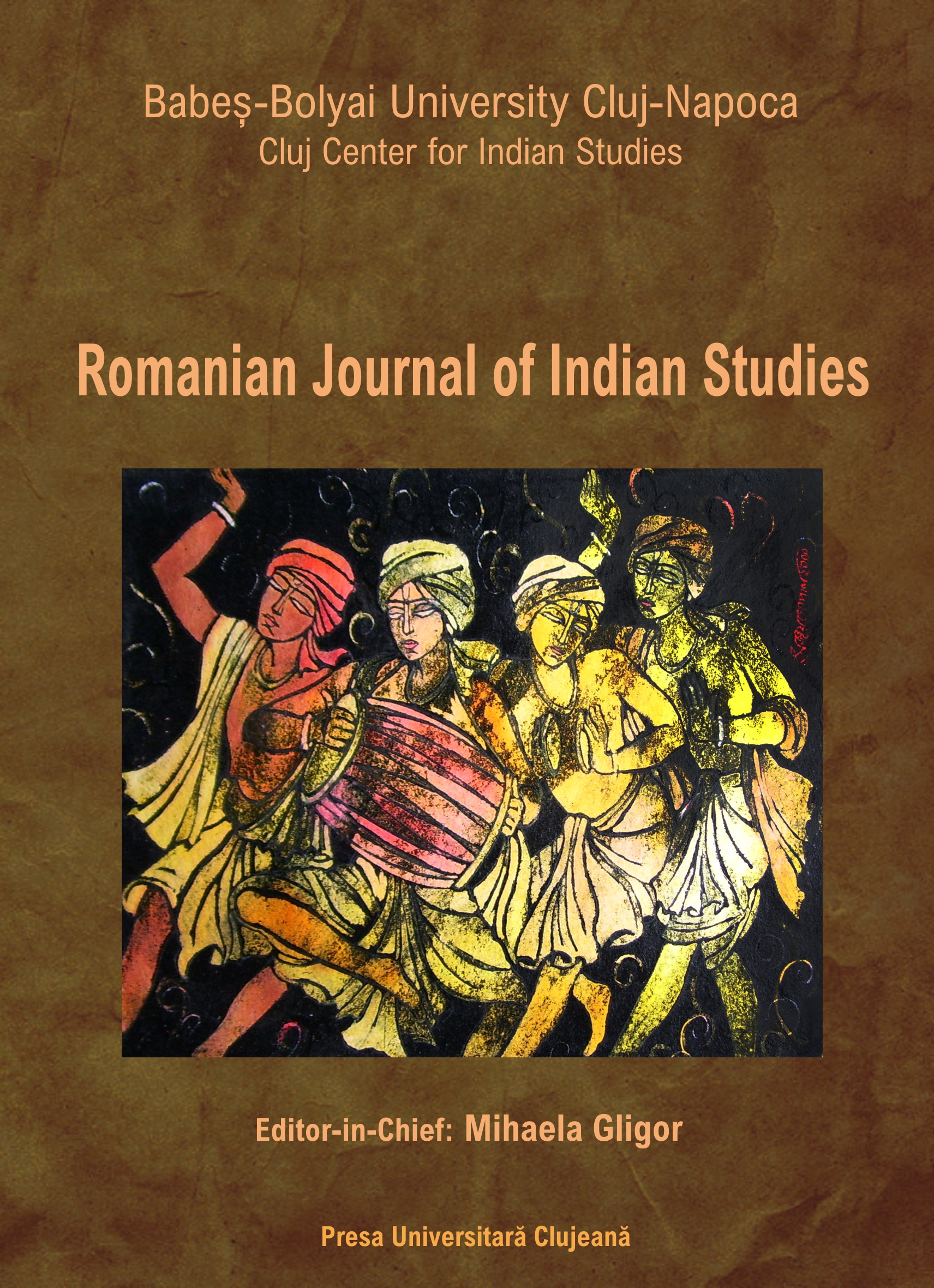
This article delves into the vital yet marginalized labor of Mehtars and other sanitation workers in colonial Calcutta, who were responsible for the manual removal of night-soil. These workers, designated as “untouchables” and subjected to deep social stigmatization, played a crucial role in maintaining urban hygiene in a rapidly growing colonial city. Initially, their labor was performed under the cover of night, but as public health concerns grew, sanitation tasks were shifted to daylight hours. This change brought the Mehtars into public view, forcing the Calcutta Municipal Corporation to reconcile their indispensable labor with the rigid caste-based social hierarchy. This article examines the intersection of caste, labor, and municipal sanitation reforms, exploring how sanitation workers navigated these dual pressures of being both essential and stigmatized. The analysis contributes to the social history of labor in colonial India, shedding light on one of the most marginalized sectors of the urban workforce.
More...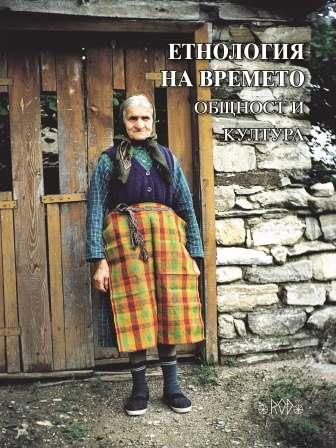
This text analyzes – from ethnological viewpoint – a relatively short period of the history of Bulgarian ethnos, and in particular of the citizens of the town of Samokov and Samokov region. This is the period between the end of Kurdzhali genocide and (the second decade of the nineteenth century) and the Liberation of Bulgaria through the Russian – Turkish War in 1877–1878. This was the period (about half of a century) when the the Bulgarian folk religiosity was developed in a form in which it was recorded in the twentieth century. The author discusses the following characteristics of the local religiosity: The Theotokos (Virgin Mary) rules “the town of the alive,” while St. Nicolas of Myra rules “the town of the dead.”In local churches, the icon of the patron of the church is placed on the iconostasis on the right side of the icon of Jesus Christ and not on the left side of the Theotokos in contrast to the usual arrangement of the icons on the iconostasis.An important element of the celebration of Easter is that the believers visit the cemeteries immediately after the priest announces, “Christ is Risen!” The grouping of the patrons of the churches in Samokov ethnoregion is clearly expressed.
More...
According to the definition by ICOM, „A museum is a not-for-profit, permanent institution in the service of society that researches, collects, conserves, interprets and exhibits tangible and intangible heritage. Open to the public, accessible and inclusive, museums foster diversity and sustainability. They operate and communicate ethically, professionally and with the participation of communities, offering varied experiences for education, enjoyment, reflection and knowledge sharing.“ (https://icom. museum/en/resources/standards-guidelines/museum-definition/) At first glance, the museums in Bulgaria, and correspondingly those in Southwestern Bulgaria, adhere to the definition provided by ICOM. They are non-profit institutions and engage in research, collection, preservation, interpretation, and presentation of tangible and intangible heritage. However, upon closer examination and precise analysis of their structure and operations, we would have to classify museums as serving administrative bodies rather than serving society. According to Article 25, paragraph 3 of Regulation No. N-00-0001 of February 14, 2011, concerning field archaeological research, public access to archaeological documentation is severely limited, and comprehensive access to the full range of archaeological materials is practically impossible. In practice, visitors have access to minimal artifacts and information, which need to be improved to create a fundamental understanding of the respective archaeological culture, settlement, or structure. There are no annual, medium-term, or long-term plans for archaeological, ethnographic, historical, interdisciplinary, or exhibition development. There is no strategy for restoration and conservation. Practically no activity is conducted regarding intangible cultural heritage. The closure of museums in Southwestern Bulgaria within municipal administrations and their limited resources restricts public interest in museums and their capabilities. In order to compensate for this, as well as to be attractive to society, museums shift from presenting culture to presenting shows. Instead of authenticity, reconstruction, a product of the subjective views of specific researchers, is exhibited. The article directs the attention of museums and their activities towards the needs and resources of society. If museums have real, not fictitious, communication with society and scientific communities, they will achieve sustainability and a real presence in cultural life.
More...
In 2011, the author noticed in the city of Russe four cast-iron pillars abandoned in a small garden. After 2012, they disappeared. The pillars are believed to have been manufactured by the Austrian company Waagner & Biro and transported to Russe in the late 19th or early 20th century. They are part of the modernization process of Ruse after the Liberation from Ottoman rule. The article describes and analyzes this artifact in order to preserve the information about it as a part of the cultural history of Russe. The author proposes several hypotheses about the nature and the purpose of the pillars.
More...
The Bulgarian photographer and researcher, Petar Boev, was appointed as the leader of the first journalistic delegation that visited Vardarska Macedonia from June 8th to June 16th, 1942. The delegation visited dozens of towns, capturing moments of the lives of Bulgarians in Vardarska Macedonia. He took over 100 photographs, which are diligently arranged in an album from Petar Boev’s personal archive. The album was entirely designed by Petar Boev, with beautifully written texts. In addition to the texts, a detailed map of the visited places during the journey was drawn. These photographs, besides being exquisite photographic specimens, hold historical and ethnographic significance. They serve as evidence of the authentic way of life of Bulgarians from the Macedonian folklore region, which remained characteristic until the middle of the 20th century. Petar Boev was a prominent figure active in various spheres of Bulgarian cultural life in the 20th century.
More...
Colours are one of the most important signs and symbolic systems in Antiquity. They reflect a certain cosmic symbolism, manifested as deities in various cosmogonies. They are present, always and everywhere, at the core of the symbolic models, and can be examined from both a semantic and a semiotic perspective. The eschatological significance of the red colour in Thracian culture as well as other ancient societies, i.e. the transition from one space to another, is saturated with signs and symbols. According to ancient treatises related to the making of colours and pigments in ancient Greece during the Hellenistic period, ochre was the most commonly used red pigment. The colour reconstruction of cultural values approximates their authentic appearance and is a scholarly contribution to examine and preserving Bulgarian cultural heritage. Research conducted in 2023 on stelae from Apollonia Pontica necropolis proved the use of red ochre in their inscriptions. The findings of the study confirmed that the verification and valorisation of the cultural-historical heritage of Thracian civilization, particularly in terms of painted decoration, are a necessary consequence of in-depth and targeted comprehensive expertise.
More...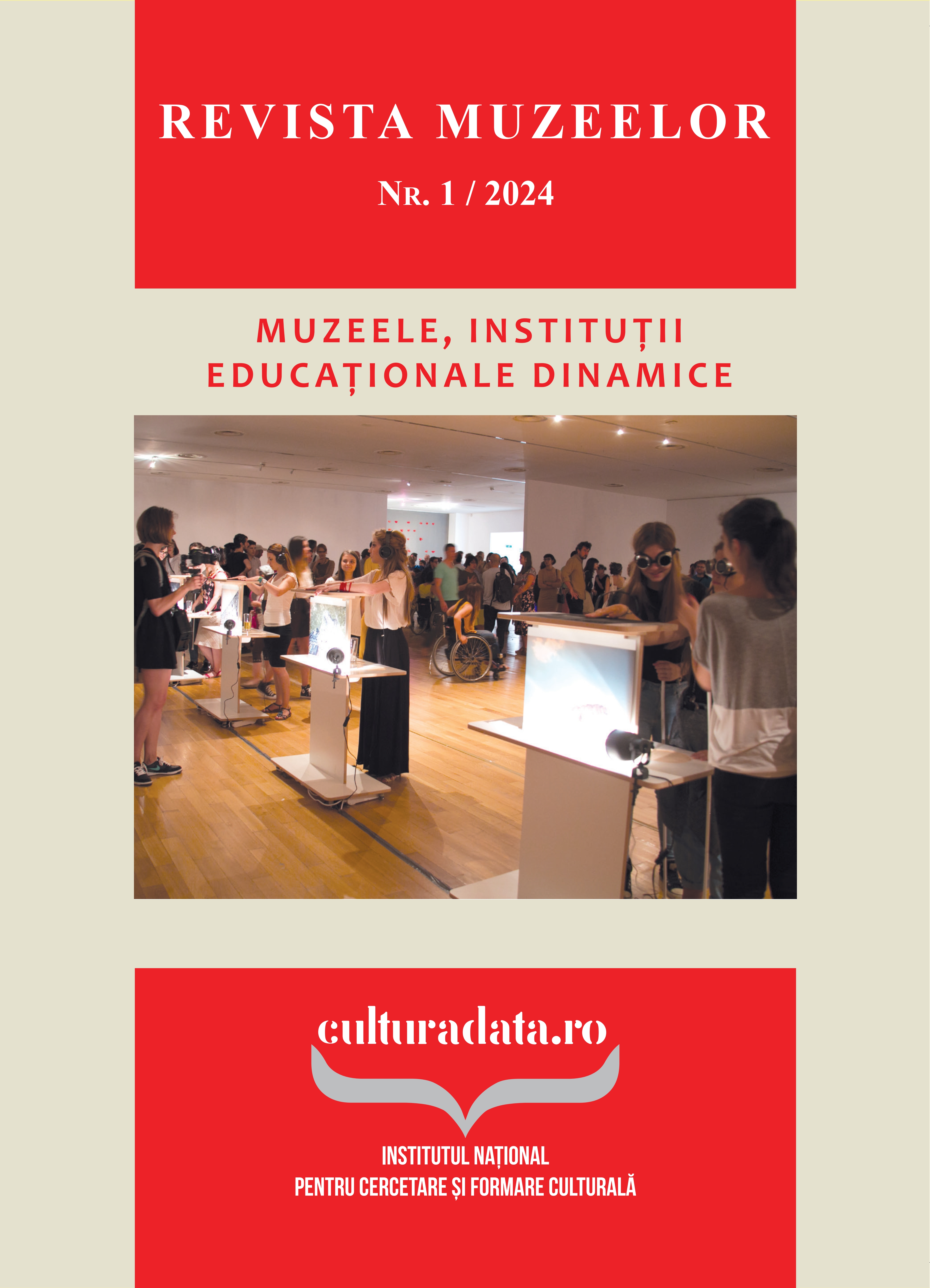
Calls for restitution and provenance research over colonial objects have embraced museums globally. The two theoretical undertakings complement one another. Governments, heritage institutions and individuals are reviewing the provenance of their colonial collections and returning them to descendant communities. Widely publicised return undertakings and ceremonies attest to this. Scholars and curators have revolutionised their thinking, approaches and writings with an intent to decolonize narratives associated with the colonial holdings. Conversations through seminars, conferences, workshops and political statements complement the efforts. However, the returns are usually presented as voluntary gestures, driven by morality, redress, equality, correction of colonial wrongs and calls for human rights. This article argues that there are also legal obligations as evidenced by developments in Europe and America today. The article methodologically interrogates three intertwined subjects: 1. the current state of affairs with Africa’s colonial heritage; 2. the customary laws on collective ownership of heritage by communities as a contributory catalyst to the migration of heritage; and 3. an ignored factor in the quest for repatriations and the development of national legal structures by states that hold colonial objects. The argument is that these should be balanced; the returns are not only based on morality and goodwill by hosting states, but are also enforced by legal obligations. The paper further argues that all stakeholders should be taken on board in provenance and restitutions, particularly the descendant communities, their wishes and customs. These present as part of ‘best museum practise’ and the decolonization narrative.
More...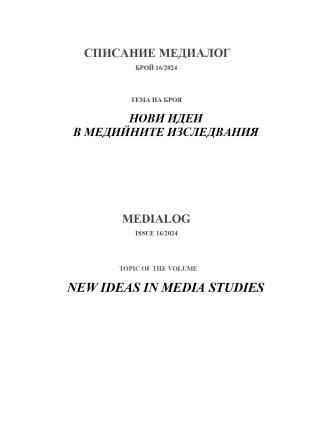
The book “Kicked a Building Lately? Architectural Criticism after the Digital Revolution” by Aneta Vasileva also becomes a history of writing about architecture in the first decades of the digital revolution. But it is also a history of the parallel lives of paper newspapers and online blogs. The tension between digital/analog is very well sketched in her text. This allows her to describe the transition of architectural criticism from the media to social networks. The author introduces us to the history of criticism, which tries to make visible the processes in an increasingly invisible architectural history.
More...
This special issue reflects on the cultural relations of state-socialist Romania between the 1950s and 1980s from the perspective of “cultural internationalism” and “cultural transnationalism”, both within the state-socialist world, and beyond.
More...